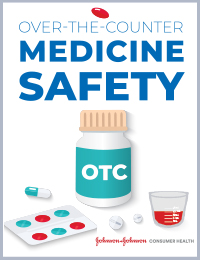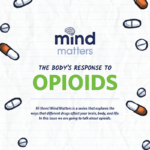Opioids and Prescription Drugs
Lesson Plans
NEW! Opioids: What You Need to Know
- Grade level: 6-8
- Includes teaching guide, student activity sheet, and student article
- Teaches about the dangers of misusing opioids, the effect they have on the body, and what causes addiction, including the role of dopamine
- Duration: 1 class period
- Standards aligned with: Common Core State Standards, National Council for the Social Studies, and Next Generation Science Standards
- Sources: National Institute on Drug Abuse (NIDA) & Scholastic
NEW! What You Need to Know About Prescription Stimulants
- Grade level: 6-8
- Includes lesson plan, student article, student activity sheet, and vocabulary list
- Teaches about the dangers of misusing prescription stimulants, and specifically ADHD medication, including the risk of addiction, and has students create an infographic
- Duration: 60-90 minutes
- Standards aligned with: Common Core State Standards & Next Generation Science Standards
- Sources: National Institute on Drug Abuse (NIDA) & Scholastic
NEW! Over-the-Counter Medicine Safety: Grades 5-6
- Grade level: 6 (scroll down for the grades 7-8 program)
- Includes 5 units plus a bonus activity, teacher guide, activity sheets, poster, pre- and post-assessments, standards, family letter, family activities (including in Spanish), interactive multimedia tools, resources for school nurses, and more
- Teaches how to use, store, and dispose of over-the-counter medicines safely and how to avoid medicine mistakes and misuse
- Duration: 6 40-45-min periods plus optional bonus activity
- Standards aligned with: Common Core State Standards (ELA), Next Generation Science Standards, National Health Education Standards
- Source(s): Johnson & Johnson Consumer, American Association of Poison Control Centers, American Pharmacists Association, et al.
Note: A previous version of this program hosted by Scholastic and only for grade 6 was previously included here. This new version was updated in 2022 and is now hosted by Young Minds Inspired. It includes content for grades 7-8.
NEW! Over-the-Counter Medicine Safety: Grades 7-8
- Grade level: 7-8 (scroll up for the grade 5-6 program)
- Includes 5 units plus a bonus activity, teacher guide, activity sheets, poster, pre- and post-assessments, standards, family letter, family activities (including in Spanish), interactive multimedia tools, resources for school nurses, and more
- Teaches how to use, store, and dispose of over-the-counter medicines safely and how to avoid medicine mistakes and misuse
- Duration: 5 40-min periods plus research time in Unit 1 plus optional bonus activity
- Standards aligned with: Common Core State Standards (ELA), Next Generation Science Standards, National Health Education Standards
- Source(s): Johnson & Johnson Consumer, American Association of Poison Control Centers, American Pharmacists Association, et al.
Note: A previous version of this program hosted by Scholastic and only for grade 6 was previously included here. This new version was updated in 2022 and is now hosted by Young Minds Inspired. It includes content for grades 7-8.
Operation Prevention: Our Brain and Body on Opioids
- Grade level: 6-8
- Includes Digital Lesson (PowerPoint) and Educator Guide
- Teaches the effects of opioids on the body and brain and symptoms of addiction
- Duration: 5 45-min sessions
- Designed to be taught in sequence with “Is our Community Influenced by the Opioid Epidemic?” (3-4 45-min sessions)
- Standards aligned with: National Health Education Standards, Next Generation Science Standards, and Common Core English Language Arts
- Source(s): Drug Enforcement Administration (DEA) & Discovery Education
Operation Prevention: Is our Community Influenced by the Opioid Epidemic?
- Grade level: 6-8
- Includes Digital Lesson (PowerPoint) and Educator Guide
- Students learn about the opioid epidemic and act as investigators to understand the impact in their own communities, while developing strategies to address the epidemic
- Duration: 3-4 45-min sessions
- Designed to be taught in sequence with “Our Brain and Body on Opioids” (5 45-min sessions)
- Standards aligned with: National Health Education Standards, Next Generation Science Standards, and Common Core English Language Arts
- Source(s): Drug Enforcement Administration (DEA) & Discovery Education
Operation Prevention: Malachi’s Medication
- Grade level: Designed for grades 3-5 but is appropriate for grade 6
- Includes Activity Guide PDF
- Teaches students how to analyze the label on a prescription and why it is important to use an appropriate measuring device with a medication
- Duration: 60 min
- Standards aligned with: National Health Standards, Common Core English Language Arts, Common Core Mathematics
- Source(s): Drug Enforcement Administration (DEA) & Discovery Education
Operation Prevention: Sarah’s Sister
- Grade level: Designed for grades 3-5 but is appropriate for grade 6
- Includes Activity Guide PDF
- Teaches the importance of storing medication properly by role playing and analyzing a scenario where students are babysitting their younger sister
- Duration: 60 min
- Standards aligned with: National Health Standards and Common Core English Language Arts
- Source(s): Drug Enforcement Administration (DEA) & Discovery Education
Opioids and the Overdose Epidemic
- Grade level: 6-8
- Includes lesson plan, student article, worksheet, and vocabulary list
- Adapted version of lesson for grades 4-6 reading level
- Teaches about the opioid epidemic, including through graphs and data that show the impact of the epidemic
- Duration: 1 class period
- Standards aligned with: Common Core State Standards, Next Generation Science Standards, and National Science Education Standards
- Source(s): National Institute on Drug Abuse (NIDA) & Scholastic
Additional Resources
NEW! Mind Matters: The Body’s Response to Opioids
- Grade level: 6-8
- Includes a student booklet and a Teacher’s Guide with suggested classroom activities
- Student booklet is available online (with video) or for download
- Explains what opioids are and the short- and long-term effects of opioid use on the brain and body
- Sources(s): National Institute on Drug Abuse (NIDA)
*Also available in Spanish










